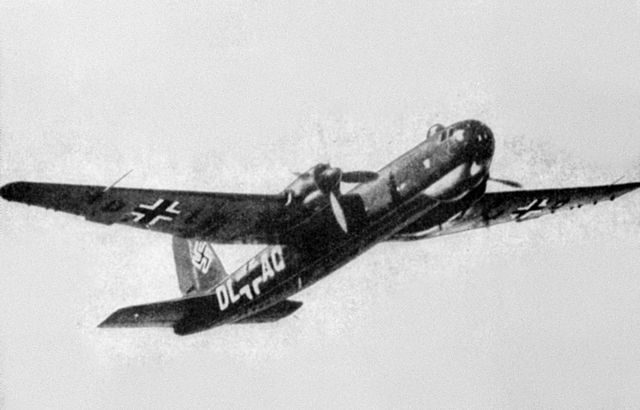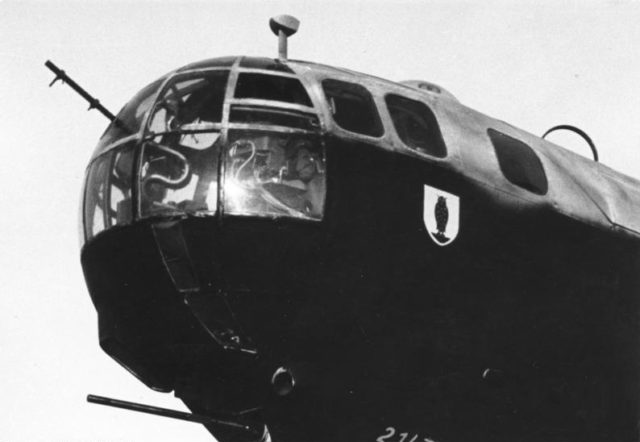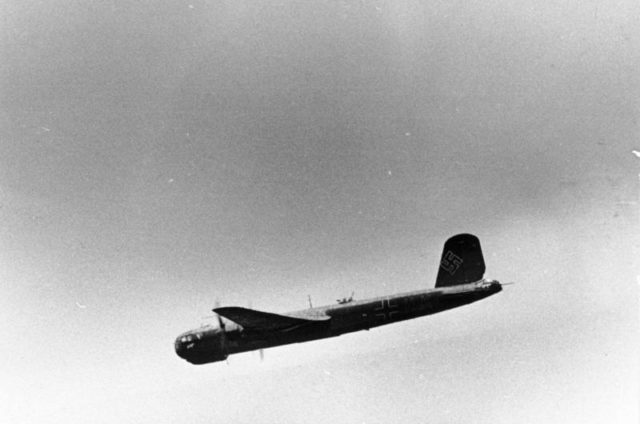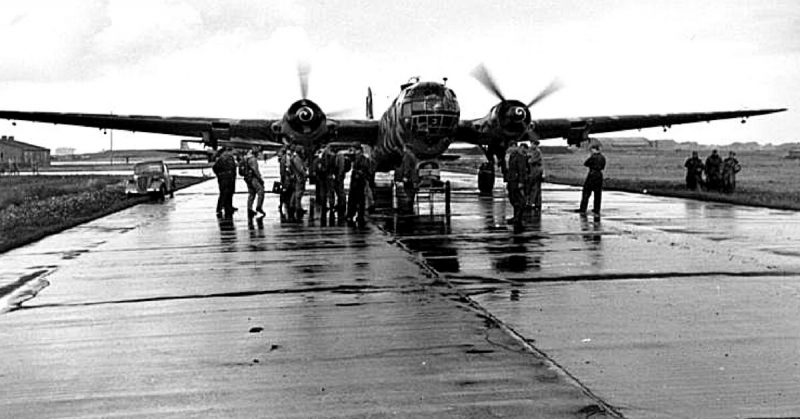The Heinkel He 177 Greif (Griffin) was an aircraft doomed from the start of its inception. Its design was intrinsically flawed, its engines frequently caught fire and it took five years to develop. To rub salt into the wounds, German pilots hated it.
With the unenvious nickname of the Flying Coffin or Luftwaffenfeuerzeug (Luftwaffe’s Lighter) the airplane was plagued by engine trouble which stemmed from a ridiculous directive that compelled designers to engineer bombers that could also dive. Initially required to help crews improve their accuracy it became apparent this requirement would be the death of the He 177. It simply could not do as the Nazi hierarchy required.
With much higher cruising and maximum speeds than the Allied heavy bomber could reach the Griffin had a huge amount of potential, but by the time the German top brass realized this it was too late.
Initially designed to a 1936 doctrine called Bomber A, it was supposed to be a long-range bomber. Then the directive came to stress it should be adjusted for moderate-angle dive bombing and it had to be redesigned.
There was also a strange insistence on the Heinkel to use only two nacelle engines which had to produce 1,500kw of power each. This was intended to reduce drag, but it created fire and death.
To give it the necessary power, the Flaming Coffin had four engines. Two were mounted on either wing, but they drove one propeller each. Early versions of the aircraft had such severe problems they were called the Flying Coffin or Lighter due to the worrying tendency for the engines to catch fire.

One of the biggest problems was the amount of heat the engines produced. A wing based evaporation cooling system was not good enough and had to be ditched in favor of a regular radiator system.
The first test flight took off two months after the start of World War II, and it quickly proved the designers had to get back to the drawing board. In any event, Heinkel continued to get it wrong as the second plane broke up in mid-air.
By the time the He 177 was introduced to combat operations it was too late to turn the tide of the war in favor of the Nazis. Obsessive tinkering and unnecessary doctrines had cost the Germans what could have been a valuable weapon.
The Griffin would eventually evolve into something of use, but this happened far too late for it to have any meaningful impact on the war effort.

One instance where it was used was the bombing of the town of Velikiye Luki in what would eventually be a fruitless exercise as the Germans were defeated there in January 1943.
Not even the defensive armaments of the plane were safe from tinkering, change and meddling. The original design called for three remote controlled gun turrets, operated from the cockpit. One gun being manned in the tail. Because work on this type of defensive system had not progressed enough to serve the Heinkel He 177’s specifications, the Flaming Coffin had to be modified once again.
The remote turrets were smaller, weighed less and produced less drag, meaning the design had to be altered to account for an increase in those three things.
As a result, the fuselage of the aircraft needed to be strengthened to take the new load. This, again, set back the timeframe for getting the Heinkel into active service.
The vicious cycle of the He 177 was an awful conundrum for the engineers to solve. Every time a change was made, drag would usually be increased which reduced fuel efficiency. A larger fuel tank would have to be added to give the plane the required range. This would mean the aircraft had to be strengthened – adding to the weight, which meant more fuel was required.
On an operational side, it did not get much better for the Luftwaffe. Pilots often reported it had good flying characteristics but the engine troubles made it deadly as did the issues with the strength of the frame.
An example of how ridiculously ill-suited to combat operations it was can be seen when it was used as a supply craft at Stalingrad. It was also pathetically bad at evacuating wounded servicemen.
The Heinkel He 177 was used to bomb cities as well as in a flak-suppressant role. Of the 13 (unlucky) missions that were flown, seven of the planes were lost because of fires. None of them were downed by the enemy.

He 177A in a shallow dive. The He 177 was meant to have dive-bombing capabilities.
Tales of the Griffin’s woes continued. During Operation Steinbock, a German bombing campaign against Britain which took place from January to May 1944, fourteen He 177’s were sent on a raid.
Of those fourteen, one burst its tyre; eight returned to base with engine trouble and four reached London.
When the plane was in the air, it handled well. Pilots would frequently climb to 7,000m while still in German territory and then approach their destination in a shallow dive turning into a glide as they went into a descent over their target.
After releasing their bombs, pilots would engage the throttles again and descend all the way back to German territory. They typically reached home at 750m altitude. These tactics ensured a survival rate of 90% – much better than the 40% obtained by other aircraft.
That success rate shows what might have been possible if the plane had been better engineered and interfered with less. The plane had tremendous potential but never reached it but this was a massive help to the Allied forces.
